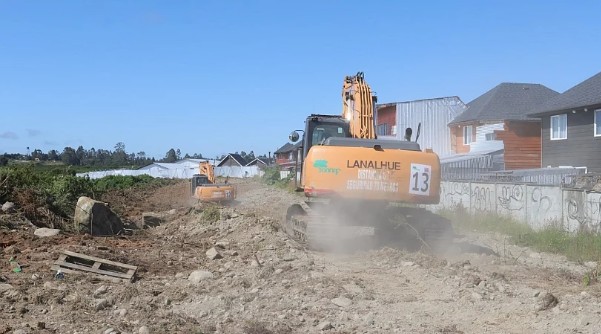Uruguay's Forestry Sector to Generate Over 30,000 Jobs in Industry Starting in 2025
According to projections by Uruguay's General Forestry Directorate, this sector will contribute 6% to the national GDP.
The forestry sector in Uruguay will increase its significance to the point that, by 2025, the industrial sector is estimated to contribute 6% to GDP and generate over 30,200 jobs, based on the presentation "Future of the Forestry Sector," delivered to a Panamanian delegation visiting Uruguay. The delegation held meetings with officials and conducted visits to nurseries, forests, and industries.
OFFICIAL PANAMANIAN MISSION IN URUGUAY
As reported by the Ministry of Livestock, Agriculture, and Fisheries (MGAP), an official mission from Panama began in Uruguay, consisting of representatives from the Ministry of Economy and Finance (MEF), the Ministry of Commerce and Industry, the National Association of Reforesters and Affiliates (ANARAP), the Ministry of Environment (MIAMBIENTE), and the Andean Development Corporation (CAF).
The delegation was received at the Executive Tower by Carlos Faroppa, General Forestry Director (DGF) of the MGAP, along with advisors Leonardo Boragno and Cecilia Penengo, and the Director of Forest Management, Joaquín Garrido.
During the visit, the delegation attended several presentations focused on the strategic aspects and challenges of Uruguay's forestry sector.
One presentation, "Native Forest Management," highlighted the importance of conserving biodiversity through the National Native Forest Strategy.
Advances in forested areas over recent decades were emphasized, along with the regulatory framework protecting ecosystems, including prohibitions on unauthorized logging and regulations on forest products like firewood.
Another presentation, titled "Results of the Forestry Law," addressed the evolution of forest plantations since the first law was enacted in 1987. It showed how planted areas reached over 1.1 million hectares by 2021, solidifying the sector as an economic growth driver.
Additionally, the impact of this legislation on job creation and rural development was explained, alongside fiscal benefits and international investments received in recent years.
The presentation "Future of the Forestry Sector" discussed projections for 2025, where, as previously mentioned, the forestry industry is expected to contribute 6% to GDP and generate over 30,200 jobs.
Special emphasis was placed on investment opportunities, highlighting Uruguay's favorable conditions, such as political stability, a transparent regulatory framework, and logistical advantages, including improvements in road and rail infrastructure.
The meeting concluded with a discussion on future challenges, such as the development of the bioeconomy and promoting wood use in construction.
The Timber and Forestry Technology Center was also presented as an example of public-private collaboration for innovation and sector competitiveness improvement.
SECTOR NUMBERS
Recently, during Uruforest held in Juan Lacaze, Colonia, Minister Fernando Mattos stated that the forestry sector aims to achieve $4 billion in revenue (a record) in the coming years.
Based on Uruguay XXI data updated in early October, as of 2024, the top export goods generating the highest foreign exchange earnings are led by pulp at $1.888 billion, followed by beef and soy, with the wood and wood products segment ranking ninth at $326 million.
PUEBLO CENTENARIO
On Tuesday the 22nd, the Panamanian delegation continued its mission in Uruguay with a visit to the UPM 2 industrial plant, located in the free trade zone of Pueblo Centenario, Durazno.
The delegation included Enrique Vega (MEF), Javier Guillén (Ministry of Commerce and Industry), Robert Gerhard Kroesen Starreveld and Jacobo Melamed Ureña (ANARAP), Carlos Espinosa Peña (MIAMBIENTE), Octavio Carrasquilla, and Jorge Concha (CAF).
The delegation was accompanied by Carlos Faroppa, Leonardo Boragno, Cecilia Penengo, and Joaquín Garrido.
During the visit, delegates toured the facilities guided by DGF technicians, who explained production processes, sustainability measures, and the project's socioeconomic impact.
Key aspects highlighted included:
- Innovations in energy efficiency and water resource management implemented at UPM 2.
- Social impact and local development, emphasizing job creation and infrastructure modernization, including the port and railway.
- Public-private cooperation as a successful model for attracting international investments in the forestry sector.
After the tour, the delegation had lunch at UPM 2, fostering discussions on potential collaborations between Uruguay and Panama in forestry and industrial development.
TACUAREMBÓ
On Wednesday the 23rd, the Panamanian delegation continued its agenda with visits to LUMIN's plywood plant and forest nursery, as well as Arboreal's sawmill and CLT plant, both in Tacuarembó.
Accompanied again by the aforementioned DGF hosts, the delegation learned about LUMIN's plywood manufacturing process, which ensures sustainable production cycles, and the forest nursery, which supplies high-genetic-quality trees and plays a key role in the production chain.
Source:AmericaEconomia

















